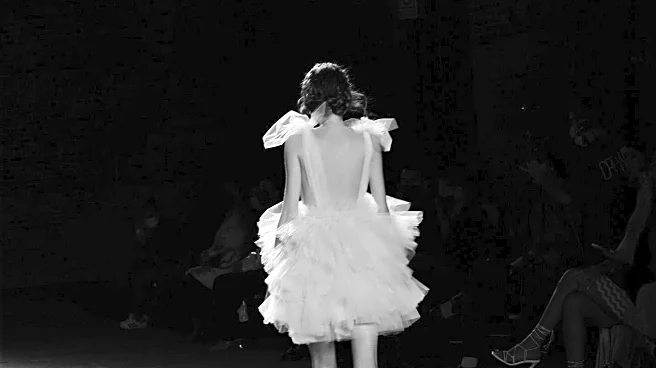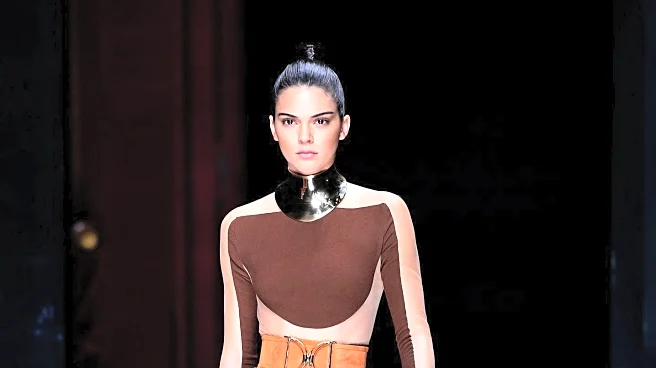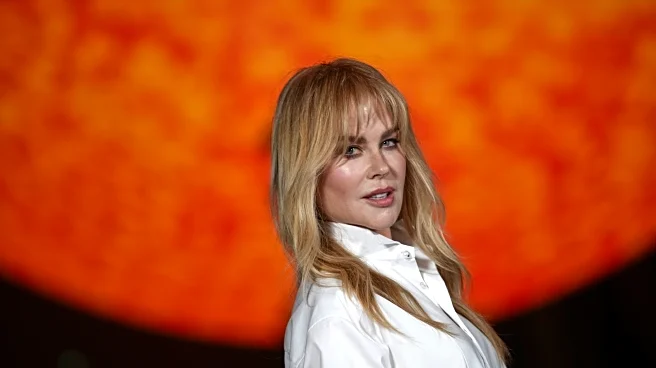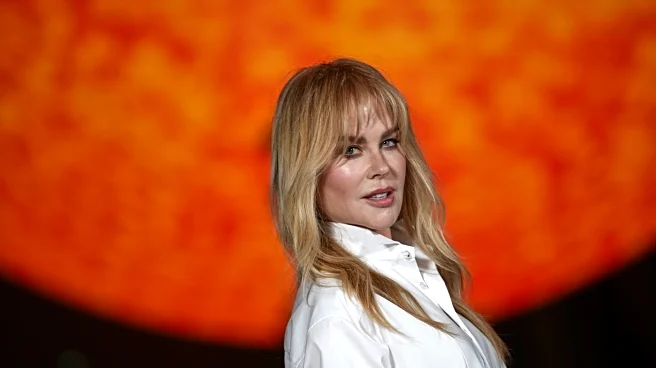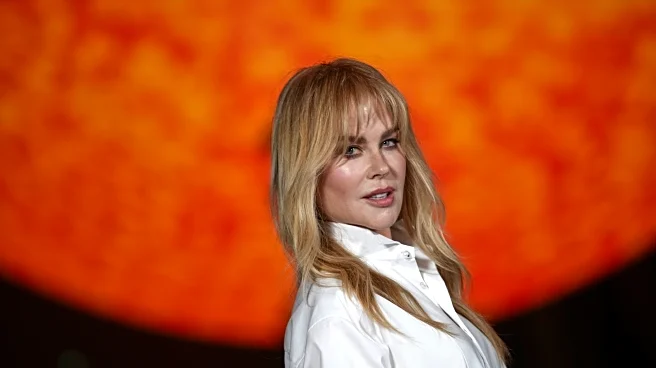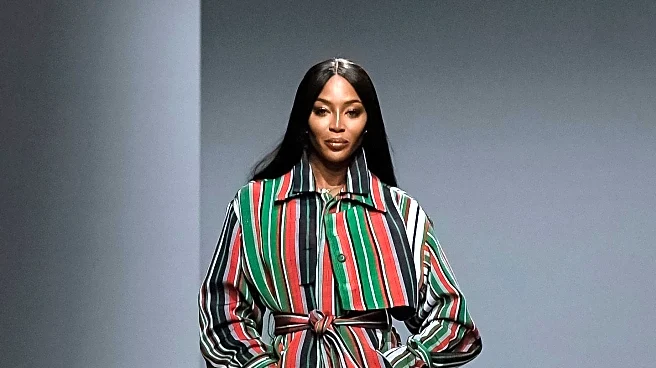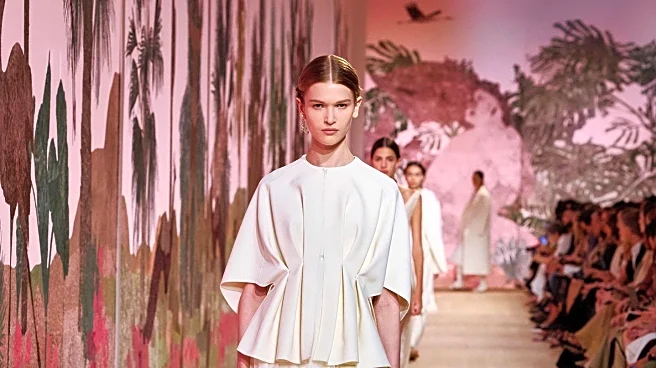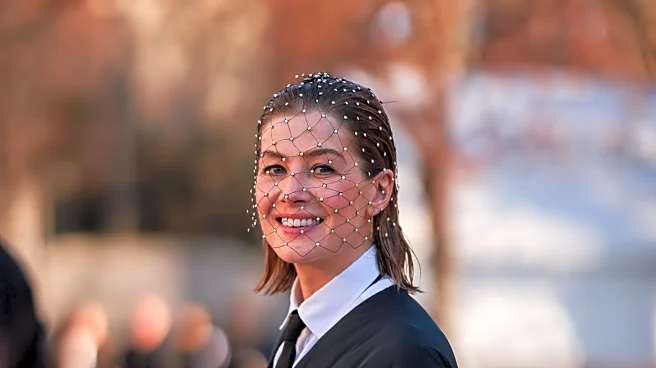What's Happening?
Paris Fashion Week has highlighted a range of brand strategies, with several fashion houses debuting collections from new artistic directors. Chanel, Balenciaga, and Dior presented fresh visions, while other brands like Givenchy and Celine focused on continuity and refinement. The event showcased a mix of grand debuts, sophomore collections, and established designs, reflecting the industry's adaptation to current economic challenges. Designers like Matthieu Blazy at Chanel and Pierpaolo Piccioli at Balenciaga introduced modern interpretations of classic styles, while others maintained stability through wearable and reassuring collections.
Why It's Important?
The diverse strategies at Paris Fashion Week underscore the fashion industry's resilience and adaptability in the face of economic uncertainty. As brands navigate fluctuating consumer demand and financial pressures, their approaches to design and marketing can influence industry trends and consumer behavior. The emphasis on both innovation and continuity highlights the balance between attracting new audiences and retaining loyal customers. The event serves as a barometer for the industry's health and its ability to respond to global economic shifts, potentially impacting future fashion cycles and retail strategies.
Beyond the Headlines
The focus on wearable and reassuring collections reflects a broader cultural shift towards practicality and sustainability in fashion. As consumers become more conscious of their purchasing decisions, brands are increasingly prioritizing designs that offer longevity and versatility. This trend may lead to a reevaluation of fashion's role in society, encouraging more ethical and environmentally friendly practices. The industry's response to economic challenges could also influence its approach to diversity and inclusion, as brands seek to connect with a wider range of consumers.

